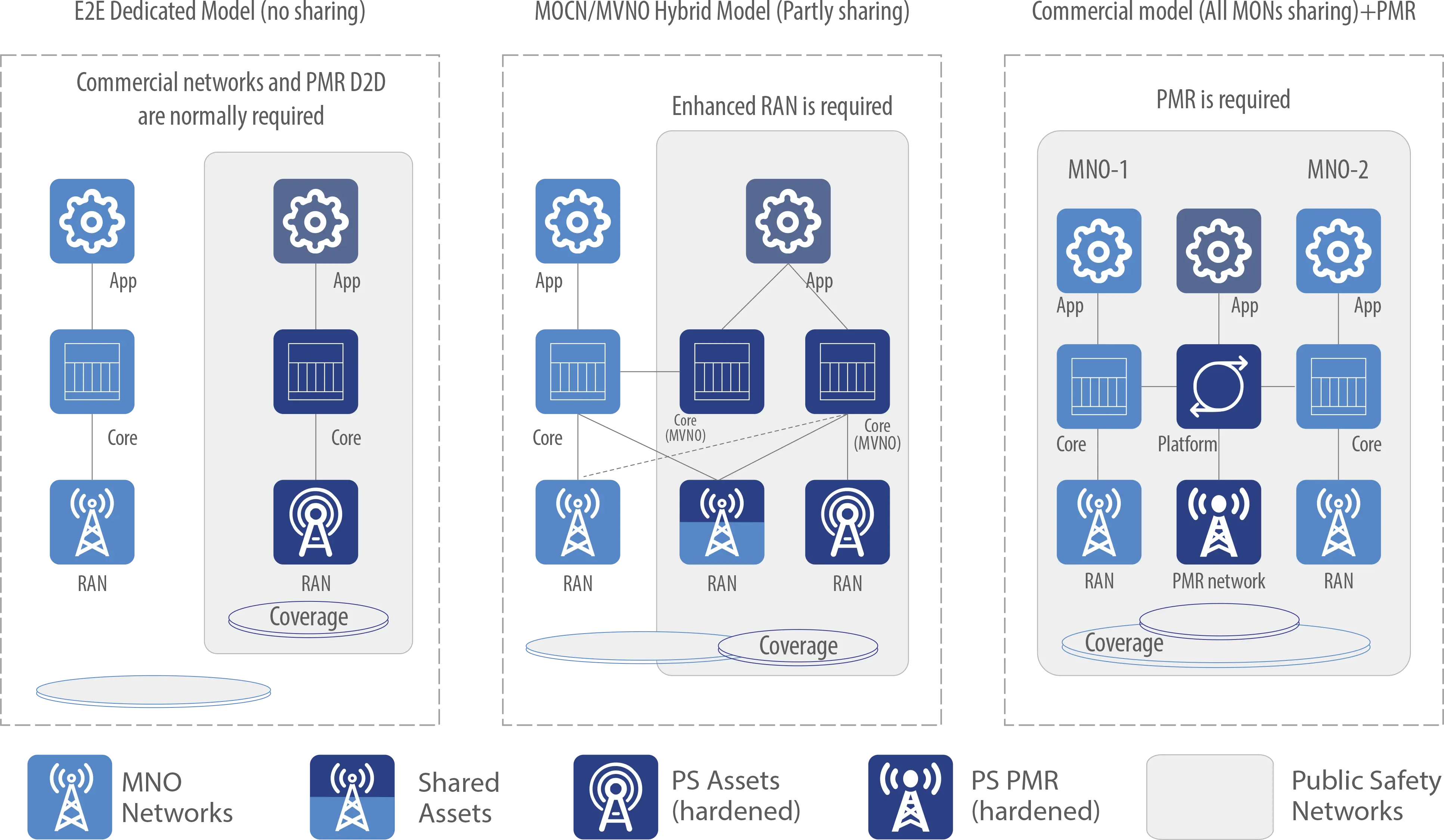Addressing the challenges of how to organize and implement next-gen MC Communications in terms of network architecture and operation models leveraging commercial networks (i.e. dedicated network, hybrid network, and commercial network) is the key question. Typical deployment approaches are generally classified into three models, illustrated as follows:
Model1 refers to the usage of a private network. A few countries implement their MC system through an E2E dedicated LTE network, such as Korea's Safe-net. Supporting public safety-grade MCX services, Private LTE networks must guarantee the availability of 99.999% from RAN to application services, including geographic and indoor coverage, and must be comparable with PMR networks. Furthermore, higher LTE spectrum (i.e., 700MHz) and lower RF signal propagation attenuation, redundant system, and hardening infrastructure will be accomplished at a higher cost. Therefore, private LTE usually needs to leverage commercial networks to fulfill the need for MC and BC.
Most countries have chosen an approach relying on commercial networks. In practice, there needs to be considerable investment in hardening commercial networks to the level of performance, reliability, and security necessary for public safety. This includes coverage extensions, infrastructure hardening, QPP mechanisms, and more. Combining the benefits of both commercial and dedicated assets, Model2 (refers to broadband hybrid model) has a stronger proposition than the dedicated LTE approach, it not only ensures public safety requirements are guaranteed but also that agencies benefit from the latest innovations enabled by the commercial market. So, Model2 is a more popular approach for some developed countries, such as the US with First Net and the UK with ESN. Model2 normally means “self-owned infrastructure is past”, but, there are still specific requirements and consideration, which includes developing a specific legal framework ensuring the cooperation among stakeholders (including MNOs), enhancing RAN networks with guaranteed public-safety grade network (i.e. cell site hardening) and building for a field network that comprises deployable, ad hoc systems with dedicated or authorized frequency, and satellite in case of in harsh events or catastrophic failures.
However, both Model1 and Model2 are less workable and affordable for most other countries. Alternatively, a practicable approach (refer to Model3, PMR<E hybrid mode) is to integrate commercial networks with existing and growing PMR systems using a method of network convergence, that leverages the benefits and readiness of both PMR and commercial LTE networks, while combining advanced features over convergence. This way, PMR remains the baseline of a public-safety grade network, offering reliability, resilience, and security, while providing controllable, dedicated, and guaranteed access for first responders during emergency operations. Model3 allows agencies to benefit from broadband services currently while waiting for the necessary migration path to MCS with QPP.
Want to know more about the next-gen MC Communications? Click here to download the white paper.


